Lakewood, NJ Pollen and Allergy Report for Summer 2023
Pollen Allergy Trends in Lakewood, NJ
When is pollen lowest in Lakewood, NJ?

February
Lowest month total PPM
Avg. PPM
When is pollen highest in Lakewood, NJ?

April
Highest month total PPM
Avg. PPM
How does pollen in Lakewood, NJ compare to New Jersey?
Lakewood has a higher average PPM than the state of New Jersey.
Lakewood yearly avg PPM:
New Jersey yearly avg PPM:
How does pollen in Lakewood, NJ compare to the USA?
Lakewood has a higher average PPM than the USA.
Lakewood yearly avg PPM:
USA yearly avg PPM:
Is pollen worse this year in Lakewood, NJ?
Spring 2023 was worse than spring 2022.
Spring 2023 PPM:
Spring 2022 PPM:
Average PPM in Lakewood, NJ
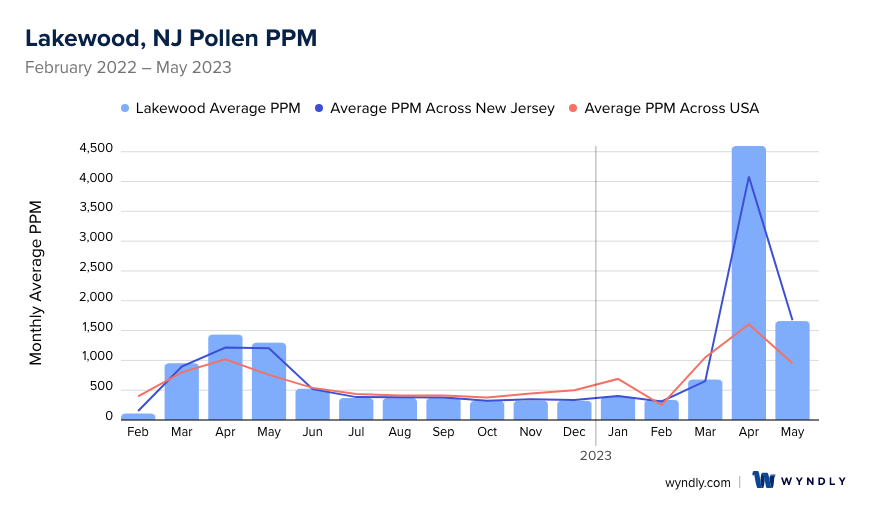
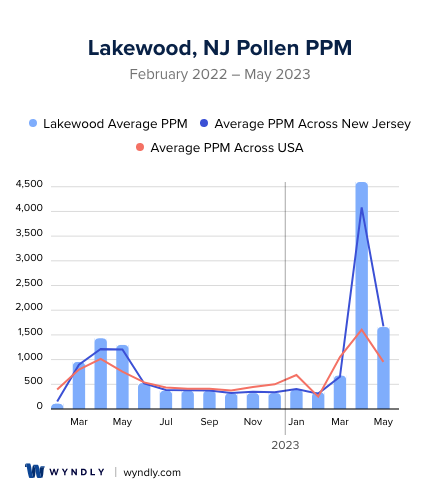
Lakewood, NJ Pollen and Allergy Breakdown by Month
Grass
When is grass pollen highest in Lakewood, NJ?
April has the highest grass pollen in Lakewood, NJ with an average PPM of
When is grass pollen lowest in Lakewood, NJ?
December has the lowest grass pollen in Lakewood, NJ with an average PPM of
Tree
When is tree pollen highest in Lakewood, NJ?
April has the highest tree pollen in Lakewood, NJ with an average PPM of
When is tree pollen lowest in Lakewood, NJ?
January has the lowest tree pollen in Lakewood, NJ with an average PPM of
Weed
When is weed pollen highest in Lakewood, NJ?
April has the highest weed pollen in Lakewood, NJ with an average PPM of
When is weed pollen lowest in Lakewood, NJ?
February has the lowest weed pollen in Lakewood, NJ with an average PPM of
Lakewood, NJ Pollen Monthly Breakdown by Pollen Type
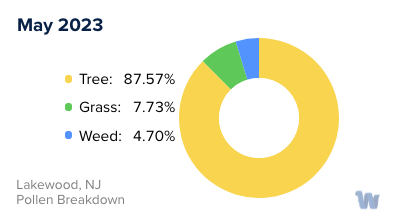
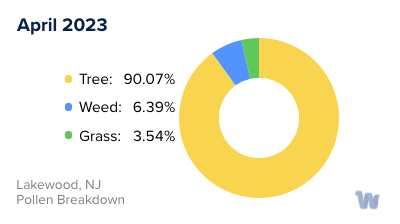
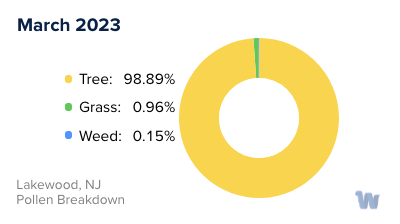
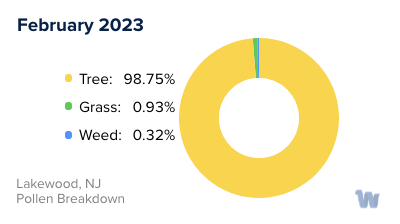
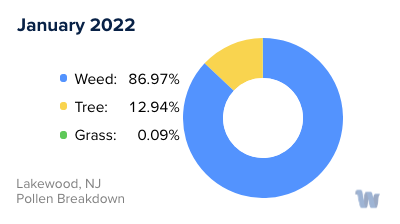
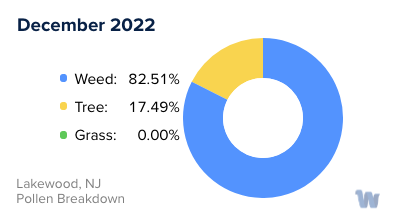
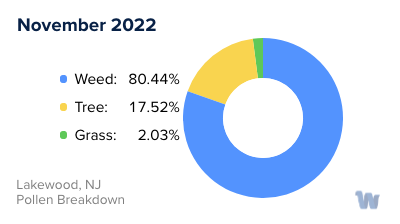
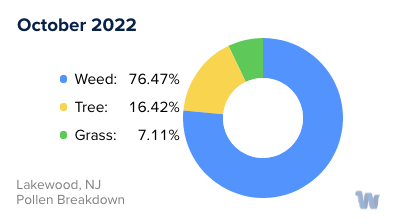
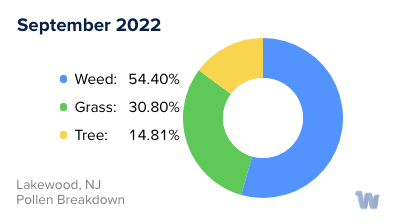
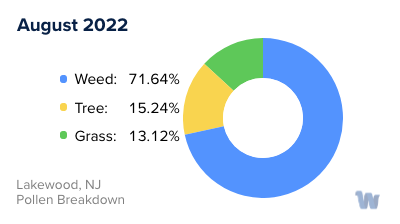
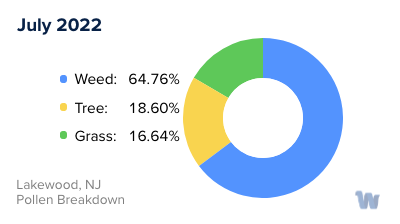
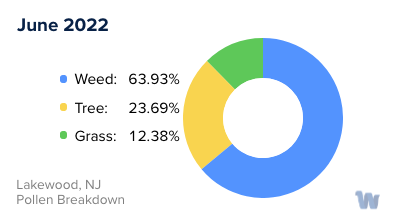
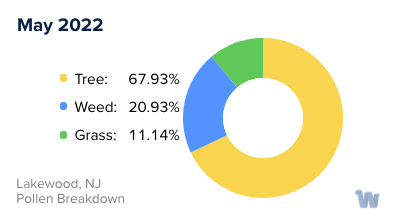
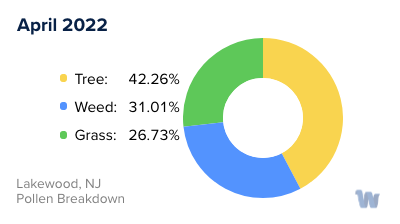
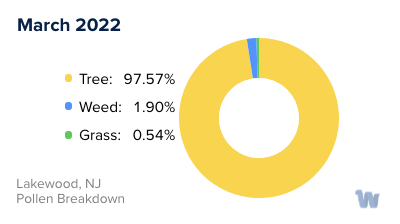
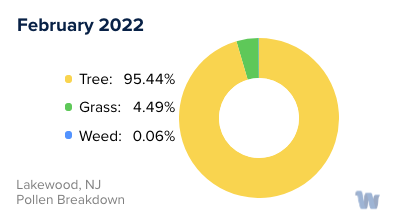
Pollen and Hay Fever in Lakewood, NJ
Pollen allergies in Lakewood, New Jersey can be a significant seasonal concern for the residents, affecting their quality of life. In New Jersey, the primary producers of pollen are grasses, trees, and weeds, each contributing to different seasonal allergies.
As the seasons transition from winter to spring, around mid-February, the first wave of pollen allergies begins. This is when tree pollen becomes prevalent. Trees such as oaks, hickories, ashes, walnuts, cedars, and mulberries come into bloom, releasing large amounts of pollen into the air.
As spring gives way to summer, grass pollen takes over as the primary allergen. Types of grasses that contribute to this seasonal allergy include Timothy grass, bent grass, sweet vernal grass, and orchard grass.
The fall season introduces the third wave of pollen allergies. During this time, weeds become the main contributors. Weeds like ragweed, lamb’s quarter, wormwood, and orache start releasing their pollen in late summer, making these allergies more prevalent up until the end of the fall season.
Particularly in Lakewood, you'll want to keep a close eye on pollen counts during the peak allergy months of April, May, June, and September. These months typically coincide with increased outdoor activities, which can expose individuals to higher amounts of pollen.
Once winter arrives, the cold temperatures cause a significant drop in outdoor allergen levels. The first freeze usually signals a relief period from seasonal allergies. However, it's important to note that indoor allergens can still cause discomfort during the winter months, as people tend to spend more time indoors.
Understanding the types of pollen and their corresponding seasons in Lakewood, New Jersey can help residents better anticipate and navigate the challenges of each allergy season.

